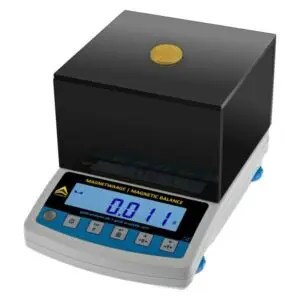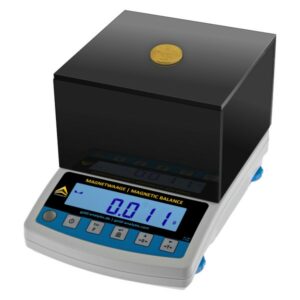Magnetism

Magnetism is a property of certain metals that has important implications in the world of precious metals. While many precious metals are not magnetic, some metals such as iron, nickel, and cobalt are highly magnetic. In addition, some precious metal alloys may contain small amounts of magnetic metals, which can affect their magnetic properties.
The types of magnetism:
Ferromagnetism: This is the most common type of magnetism and is exhibited by materials like iron, nickel, and cobalt. In ferromagnetic materials, the magnetic moments of individual atoms align spontaneously, creating a strong magnetic field. These materials can retain their magnetization after an external magnetic field is removed, making them useful for permanent magnets.
Paramagnetism: Paramagnetic materials have unpaired electrons, which align with an external magnetic field, resulting in a weak attraction to the field. However, they lose their magnetization when the external field is removed. Examples include aluminum, platinum, and oxygen.
Diamagnetism: Diamagnetic materials have paired electrons, but when exposed to an external magnetic field, they develop a weak magnetic moment in the opposite direction to the applied field. This causes them to be weakly repelled by the magnetic field. Examples include water, copper, and gold.
Antiferromagnetism: In antiferromagnetic materials, adjacent magnetic moments align antiparallel to each other, resulting in zero net magnetization. Although they possess magnetic ordering, the overall effect is neutral at a macroscopic scale.
Ferrimagnetism: Ferrimagnetic materials are similar to ferromagnets, but they have two different types of magnetic ions with opposing magnetic moments. The net magnetic moment is non-zero, but smaller than in ferromagnetic materials. Examples include magnetite (Fe3O4) and ferrites.
Magnetism is an important consideration for precious metals companies, as it can affect the way that metals are processed and handled. Magnetic metals can interfere with certain types of testing and analysis, which can make it more difficult to accurately determine the composition and purity of a sample.
Palladium, platinum, and rhodium are all precious metals that are used in a variety of applications, from jewelry and investment to catalytic converters and electronics. While these metals are not typically magnetic, they do exhibit some interesting magnetic properties. For example, platinum and palladium are diamagnetic, which means that they are repelled by a magnetic field. Rhodium, on the other hand, is paramagnetic, which means that it is weakly attracted to a magnetic field. These magnetic properties are important considerations for the processing and handling of these precious metals, as they can affect how they are tested and analyzed.
Magnetic susceptibility testing is a non-destructive technique that is used to determine the presence of magnetic metals in a sample. This method is often used to verify the purity and authenticity of precious metals, as it can detect even small amounts of magnetic impurities.
For table of magnetism press magnet

Testing gold using its diamagnetic behavior can be done with
MagneticScreenScale from Goldanallytix that presend the advantages of thier scale over XRF as explaied below:
“Tungsten forgings are dangerous! Tungsten has the same specific density as gold and is therefore the perfect forging material for gold ingots and -coins.
The MagneticScreenScale lets you detect such forgings quickly and with certainty. The scales’ strong magnetic field penetrates the ingot’s or coin’s core deeply without destroying it. Tungsten can be discovered until 3 mm below the golden surface! The biggest advantage of the magnetic scales is that it detects tungsten occlusions in fine gold (99.99 % gold). The information here is always unambiguous and tungsten inclusions are still detected under a gold layer of up to 3 mm with complete reliability. In comparison, an expensive XRF-device can only pervade 0.010 mm into gold. That means that the magnetic scales measure about 300 times more deeply into the metal. That’s why the magnetic scales are ideal for testing the authenticity of investment gold (ingots, coins, etc.) in a high troughput. Thanks to its accumulator, the scales can be run in places without mains power and is a perfect assistant when purchasing investment gold.”



